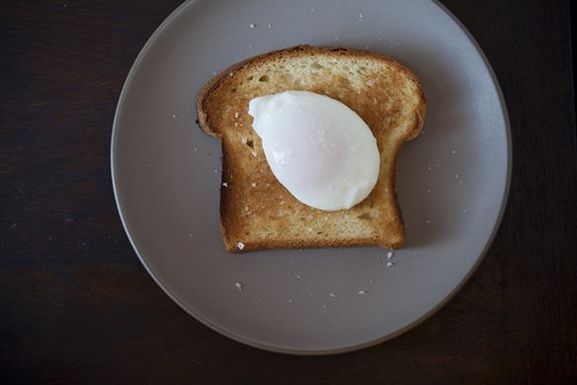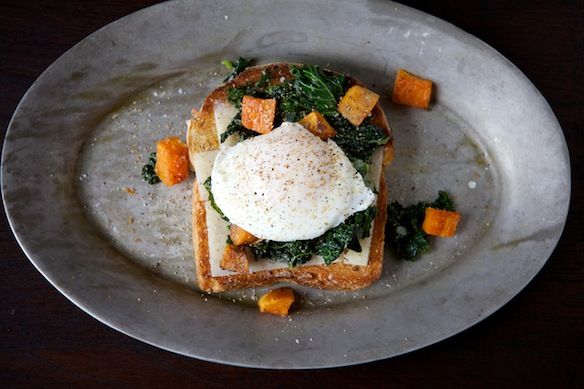Popular on Food52
Continue After Advertisement
23 Comments
madeline
July 17, 2016
can I poach an egg with apple cider vinegar if that's all I have, or will it make the egg taste funny?
Hector L.
December 25, 2014
What does one do with the twelve bucks of olive oil that now taste of fish? Wouldn't this method work just as well using, say, a preserve jar a little bigger than the filet to hold it in oil?
Ange B.
February 4, 2014
I also would appreciate a video or how to on poaching more than one egg at a time. I can always manage one and then the rest are lost causes.
Terry D.
February 1, 2014
Poached egg instructions always read as if you're only making one egg, but who ever does that? How do you make a second "tornado" without disturbing the first egg? Or a third?
Cassandra B.
February 10, 2014
I would keep a bowl of warm water at the ready and do one at a time, slipping them into the bowl to keep them warm. While I'm sure there are some who can pull off a double or triple tornado, I would most likely make a mess of it!
Antigoni S.
February 1, 2014
I find that if I add too much vinegar it still works, but it "seasons" the egg more that I want it too. If the vinegar is part of the flavor that you are going for with the final product you can for sure add a splash more. You will see some recipes for poached egg dishes that call for red wine vinegar, or rice wine vinegar, as it will give the egg a hint of flavor.
Burnt O.
February 1, 2014
What Simon said - drain off the outer white before tipping the egg into the vortex. Use a slotted spoon.
Borrowed S.
February 1, 2014
I use this method regularly but I never measure the vinegar. What is the outcome if I add too much?
Antigoni S.
February 1, 2014
I find that if I add too much vinegar it still works, but it "seasons" the egg more that I want it too. If the vinegar is part of the flavor that you are going for with the final product you can for sure add a splash more. You will see some recipes for poached egg dishes that call for red wine vinegar, or rice wine vinegar, as it will give the egg a hint of flavor
Antigoni S.
January 29, 2014
Thanks Camille! The large pot made all the difference! Perfect tear drops!!
Antigoni S.
January 28, 2014
Great video and poaching tips! I often want to poach 2 eggs, or more at a time. Do you have any tips for this, since you can really only drop on egg into the "tornado" at a time?
Camille B.
January 28, 2014
you could ideally fit 4 eggs comfortably in that amount of water... have them all cracked in individual bowls and drop one after the other, rather quickly so that the water's tornado effect doesn't have time to loose its momentum. :)
boulangere
January 27, 2014
I love, love, love, love, love poached eggs! And the tornado tip is great.
http://thesolitarycook.wordpress.com/2013/08/24/fifty-shades-of-a-summer-morning/
http://thesolitarycook.wordpress.com/2013/04/22/meatless-monday-quinoa-cakes/
http://thesolitarycook.wordpress.com/2012/03/15/wisemonas-potato-cakes/
http://thesolitarycook.wordpress.com/2013/08/24/fifty-shades-of-a-summer-morning/
http://thesolitarycook.wordpress.com/2013/04/22/meatless-monday-quinoa-cakes/
http://thesolitarycook.wordpress.com/2012/03/15/wisemonas-potato-cakes/
Simon Y.
January 27, 2014
One other thing that can mess with a poached egg: The egg not being fresh, leading to some of the white separating into wispy strands. Using a mesh strainer to drain away the loose white does wonders before you put it into the bowl you're going to use to slip it into the water.
Nancy
January 27, 2014
I just tried your method Camille. Two perfectly tear-dropped poached eggs! So much more beautiful than my usual ragged (ruffled, if you were feeling generous) ones. :)
Nan
Nan
S C.
January 27, 2014
A poached egg (freshly laid by my hen) with freshly ground pepper and kosher salt on a piece of lightly buttered multigrain toast is perfection.



See what other Food52 readers are saying.